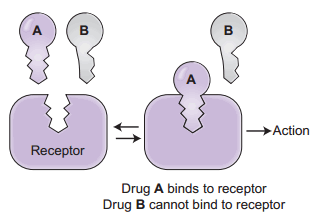Receptor Highlight - Kinase Linked Receptors
Like all broad receptor families, kinase-linked receptors are incredibly diverse and have wide-ranging effects...

Hello, and Happy New Year! Welcome back to the Receptor Highlight Series. In this installment, we'll focus on kinase-linked receptors, which find themselves among my personal favorites!
Some kinase-linked receptors are often associated with cancer because their activation can trigger changes in metabolism, cell growth, and differentiation, of which cancer takes advantage. However, cancer is not the focus of this article, and these receptors play a role in other processes including apoptosis (programmed cell death), inflammation/immune modulation, and tissue repair!
These receptors, like G-protein coupled receptors, are broadly categorized as transmembrane receptors. This means that they span across the cell membrane, though, unlike G-protein coupled receptors, they usually only cross the cell membrane once. That said, from a structural standpoint they are broken down into three distinct "domains": an extracellular "ligand-binding" domain, an intracellular domain that initiates the signaling cascade, and a transmembrane domain sandwiched between the other two.

When first learning about receptor theory, a common analogy used to describe the specificity of a receptor-ligand interaction is that of a lock and key. Just as only one key with a particular shape can open a specific lock, only certain ligands, such as the hormone erythropoietin (EPO), can bind to and activate a specific receptor, like the erythropoietin receptor.
Though, unlike some other receptor types, kinase-linked receptors commonly require dimerization (joining/pairing of two receptors). Per the lock and key example, two "keys" and two "locks" are typically required for the biological effect(s) to take place.
When an EPO molecule binds to an EPO receptor, it causes a conformational change that drives the receptor into a state that promotes dimerization. If a second receptor is also in the activated conformation, the two receptors will pair up to form a dimer. On a side note, dimerization can occur between two identical receptors (homodimerization) or between receptors of different types (heterodimerization). This highlights the incredible versatility of cells and the vast diversity of biological outcomes that result from the various combinations of receptor dimerization!
Don't forget that when things bind to a receptor, or any protein for that matter, changes in the structure can occur. Like the staircases in Hogwarts, moving stairs may lead to new doorways and places to explore, but in the case of a receptor, conformational changes may lead to the exposure of new binding sites and functions!

Like a ligand stimulating a receptor, dimerization is a binding of sorts that leads to further conformational changes and potentially new functional characteristics. Because of this dimerization, the receptor pair can phosphorylate itself (a process called autophosphorylation) on a suitable amino acid in the intracellular domain, usually a tyrosine, serine, or threonine.

These phosphate groups are transferred by enzymes called "kinases", hence the family name. When phosphate groups are transferred to relay proteins, they become activated and continue the signaling cascade. This signal typically results in changes to the transcription of various proteins/products, ultimately leading to a physiological outcome. In the case of the EPO receptor, we see an increase in red blood cell production.
The effects of kinase-linked receptors can vary significantly, with a few additional examples provided below:
Epidermal growth factor receptors -> cellular proliferation and growth
Insulin receptors -> increased cell uptake of glucose

Like all broad receptor families, kinase-linked receptors are incredibly diverse and have wide-ranging effects. I really hope you enjoyed this installment, and I look forward to highlighting another receptor soon!
*Information presented on RxTeach does not represent the opinion of any specific company, organization, or team other than the authors themselves. No patient-provider relationship is created.

